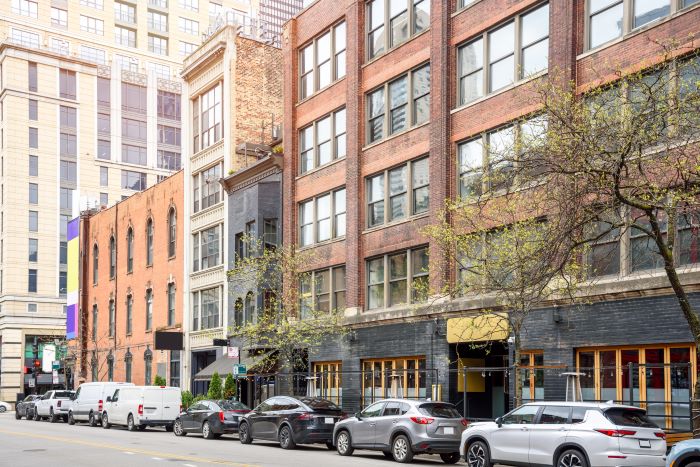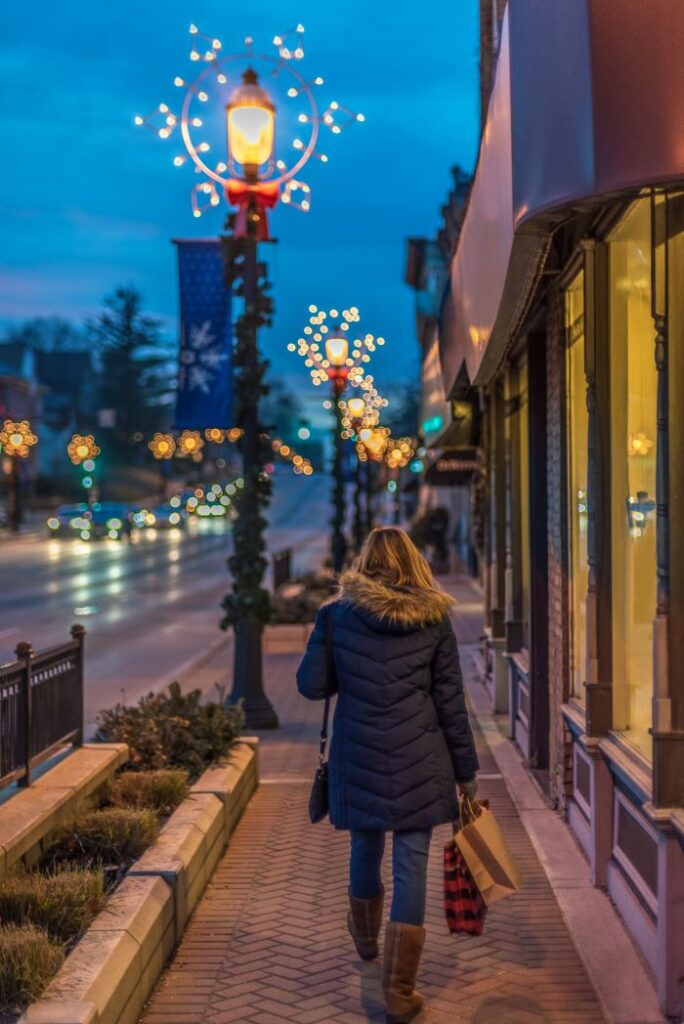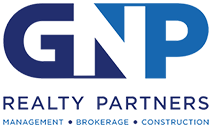Mixed-used development has seen a resurgence as urban centers look for ways to revitalize central business districts post-pandemic. The Chicago real estate market is among the U.S. urban centers responding to the demand for multi-use development, responding to a desire for workplace flexibility, communities that support lifestyles and ongoing housing shortages.
Mixed-use development blends multiple real estate sectors (most commonly, office, retail, hospitality and residential) to create urban communities where people can live, work and play in the same area. Mixed-use development is not new. A Roman market of shops and apartments dating to 110 A.D. may be the oldest example. In modern times, Chicago is a leader in this sector. The 900 North Michigan Ave. building was one of the first new developments (built in 1989), combining multiple uses: a shopping mall, hotel, office space and condominiums.
More recently, the adaptive reuse of existing structures has attracted strong interest from investors and developers. A prime example is Chicago’s Fulton Market in the West Loop, which combines residential, restaurants and pedestrian-friendly spaces, all connected to public transit, helping increase the economic success of the neighborhood. The ROI of mixed-used developments can be tremendous when the right mix of functions comes together in the right location with the right professionals behind the project.

What the Future of Mixed-use Developments Looks Like
The future of mixed-use developments is shaped by key trends that are redefining how urban spaces meet the needs of modern communities. As cities like Chicago continue to grow, sustainable practices, enhanced walkability, and integrated technology are crucial components for successful developments that resonate with today’s urban dwellers.
Sustainability
Sustainability is not just a priority; it’s becoming a core expectation in the development of mixed-use spaces. Developers are adopting eco-friendly designs that emphasize green spaces, energy-efficient systems, and the responsible reuse of existing structures. Pre-existing buildings, with their established footprint and often historic character, are ideal candidates for redevelopment. Converting these structures into mixed-use hubs allows for a reduction in carbon emissions, meeting both environmental goals and urban growth demands. With projections that by 2050, 70% of the world’s population will reside in cities, such sustainable practices are essential for ensuring urban spaces remain resilient and resource-efficient.
As a bonus, sustainable buildings often yield financial benefits, reducing operating costs through energy savings and attracting tenants interested in reducing their environmental impact.
Walkability
Chicago consistently ranks among the most walkable large U.S. cities—making it ripe for mixed-use development combining residential and consumer services. Driven by the shift to remote or hybrid work, people want to live in or near places that offer alternative spaces to work (including green space) and social spaces to connect as a community. Most new multifamily developments cater to younger demographics who lead an active lifestyle and seek nearby amenities to support their preferred leisure activity, whether shopping, dining or wellness. Read more about how lifestyle changes drive the growth of mixed-used development in CREATE Magazine, published by the National Association of Realtors®.
Creating a built environment “community” requires engaging users emotionally, relying on green space and cultural arts. The owners of Chicago’s United Center recently announced a $7 billion development that will reshape Chicago’s West Side. Proposed amenities include a 6,000-seat theater-style music hall to host music, arts and cultural events. In addition, The 1901 Project consists of affordable housing units, retail and public open space on 55 acres of privately owned land. Such developments become a destination for Chicagoans and tourists, boosting the ROI for investors.
Technology
Smart building technology is a third trend associated with mixed-used developments in the Chicago real estate market, attracting tenants and helping to lower costs. Common examples include energy-efficient systems, digital connectivity, and predictive (versus preventative) maintenance, which enables property managers to anticipate and plan, ensure the availability of parts, and reduce costly “emergency” or unnecessary maintenance calls.
With rising temperatures and the resulting rise in energy costs, developers are embracing technologies associated with automated lighting and HVAC systems based on occupancy and tenant usage patterns. The flexible and adaptive nature of mixed-used developments makes this technology invaluable, as space use needs may change over time.

How Mixed-use Developments Are Changing Chicago
Mixed-use developments are transforming Chicago’s urban landscape, blending residential, commercial, and recreational spaces to create vibrant, interconnected communities. These projects are driving the revitalization of underutilized areas, such as the West Loop and Fulton Market, which have evolved into thriving neighborhoods thanks to a mix of housing, retail, and dining options. By creating walkable communities where residents can live, work, and socialize in close proximity, mixed-use developments are reducing traffic congestion, improving public transportation access, and fostering greater social cohesion.
These developments also contribute to the city’s sustainability efforts by repurposing old buildings, reducing urban sprawl, and minimizing environmental impact. As the demand for flexible, adaptable living spaces grows, mixed-use projects are not just reshaping neighborhoods—they are playing a key role in the evolution of Chicago’s urban fabric, making the city more resilient, sustainable, and livable for future generations.
Challenges Associated with Mixed-use Development
Investors generally find mixed-used development appealing as risk can be spread among multiple asset classes. Further, flexible and adaptable spaces can accommodate and leverage changing trends and economic conditions, reducing the likelihood of an overstock of inventory in one sector, as we’re currently experiencing in the office market.
However, mixed-use projects come with unique challenges, most of which can be grouped under a “complexity” heading. Mixed-use projects are more complex than single-use projects, typically involving more stakeholders with varying interests. Below are some specific challenges.
Financing
Financing mixed-use development is complex and can be more costly than single-use developments. Further, the tools used to measure financial success differ with different asset classes. The greater physical complexity associated with mixed-use projects can increase development timelines and costs, although economies of scale can offset higher development costs.
The complexity of mixed-used development often equates with lending challenges. A lender may have difficulty assessing the value of a single development with multiple and varied sources of revenue and may prefer a single borrower entity. Projects structured with each use as separate ownership may find more flexibility for securing financing, allowing the developer to sell individual asset uses at different points in the development process and repay the associated loan. Many factors (including some not discussed here) contribute to the financing strategy, so financial expertise is essential to project planning.
Zoning
Most land is zoned for specific uses, e.g., excluding the combined residential and commercial use. Mixed-used developments often require securing a zoning variance or change to accommodate its varied uses. Many municipalities are eager to accommodate an adaptive reuse project, especially if it will revitalize a depressed neighborhood. Regardless, this process can be cumbersome as it extends to issues beyond permitted uses, including building codes, parking requirements and other regulations specific to mixed-use developments. Such issues must be addressed before a developer can begin leasing.
Operations and management
Managing diverse property types calls for a property manager with diverse expertise. The scale of systems may vary, as will how property managers communicate and interact with tenants. Developers should hire a professional property management firm with experience and expertise in each property use type to maximize the efficiencies and cost savings associated with a single property manager. Further, multiple managers mean higher costs and increased vendor management and security risk.
Mixed-use Development Takes a Team
The opportunities and challenges associated with mixed-use development in the Chicago real estate market are equally substantial. The most successful mixed-used developers have a team of investors, designers, architects, builders and operators connected under a single business operation, who can navigate the complexities of a project, delivering known and consistent quality to a project.
GNP Realty Partner’s family of companies represents all phases of a mixed-use development project and brokerage. GNP also maintains in-house proficiency, licensure and certification for LEED and building sustainability, as well as janitorial and maintenance, security, and accounting services. Contact GNP to discuss your interests in mixed-use development.








